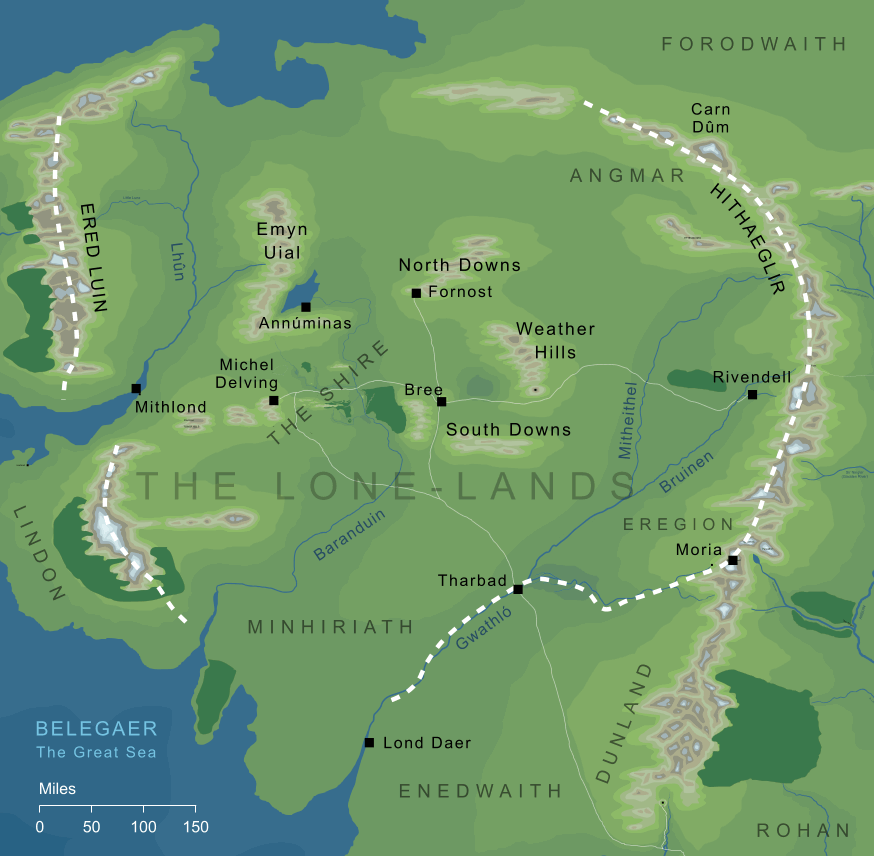
The geography of the Lone-lands of
Eriador
The geography of the Lone-lands of
EriadorThe name among Men and Hobbits for the wide region of northern Middle-earth that lay between the Blue Mountains in the west and the Misty Mountains in the east. The name 'Lone-lands' is a close translation of the Elvish name for this region, Eriador
Historically, this part of Middle-earth had fallen within the North-kingdom of Arnor, and was ruled over by Elendil and his descendants from their capital at Annúminas on Lake Evendim. Dissent and warfare caused that kingdom to break apart, and an invasion by the forces of Angmar wiped out even the remnants of the earlier kingdom. Angmar was itself defeated by the armies of Gondor, but when those armies returned into the south, what had once been a prosperous country was left barren and deserted. It is presumably at this time (the years after III 1975) that the names 'Eriador' and 'Lone-lands' were first used for the newly empty wilds.
Even after this time, isolated pockets of civilization remained among the Lone-lands, most notably in the Shire and the Bree-land. Outside these enclaves, the lands of the lost realm of Arnor had reverted for the most part to a dangerous wilderness, peopled by wanderers. Among these wanderers were the Rangers, the descendants of the Kings of Arnor, from whom Aragorn eventually arose to refound the Kingdoms of the Dúnedain. He once again established a capital at Annúminas, and after his reign began in III 3019, it is likely that the Lone-lands once again became populated and prosperous.
Indexes:
About this entry:
- Updated 9 February 2015
- This entry is complete
For acknowledgements and references, see the Disclaimer & Bibliography page.
Original content © copyright Mark Fisher 1998, 2001, 2008, 2015. All rights reserved. For conditions of reuse, see the Site FAQ.

